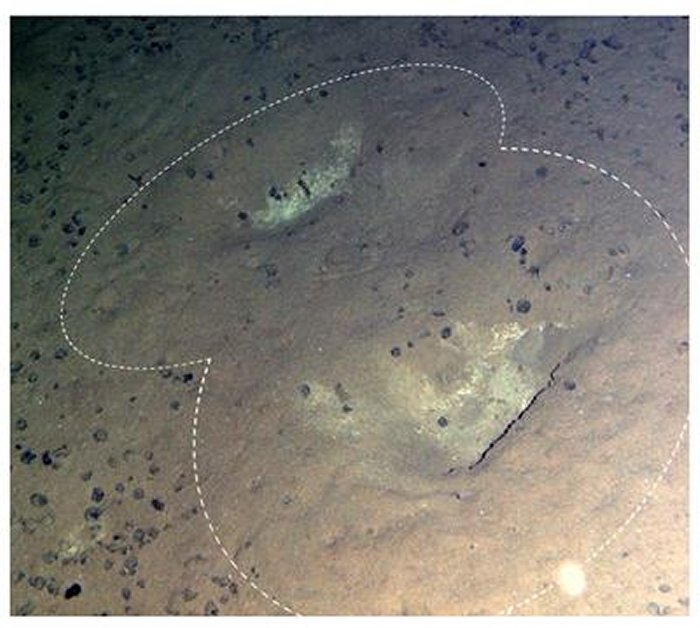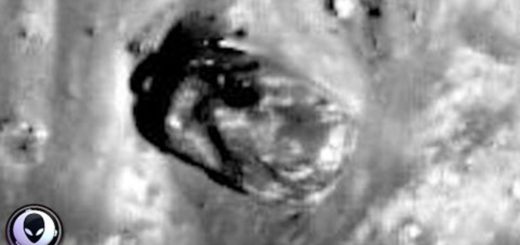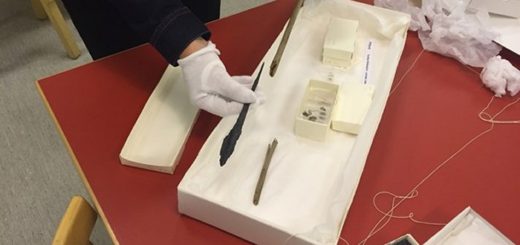Strange Giant Footprints Discovered Undersea Puzzle Scientists
Strange giant footprints have been found below the surface of the Pacific Ocean between Mexico and Hawaii. Scientists are now trying to explain the mysterious “tracks” on the seafloor, and there are some theories, but no definite answers yet.
The discovery was made by a deep-diving robot as part of a British study from the National Oceanographic Centre (NOC) in Southampton.

Depressions found on the Pacific Ocean floor could have been made by deep-diving whales. Credit: Southhampton University
In total over 3500 individual depressions were detected and some of them measure at a length of 2.5 meters and a depth of 13 inches. It has been said that the tracks are so deep (maximum water depth of 4258 m – just over 2.5 miles that they couldn’t have been made by any living organism, but that assumption may be wrong.
At first, these tracks perplexed the researchers. They were not related to mining or scientific operations within the area; they appeared too large to be created by fish or any other typical deep-sea animals; and they were not thought to be formed by geological processes, such as gas or fluid seepage.
However, these tracks did resemble those observed in other regions of the world’s oceans attributed to whales, leading the researchers to suggest that a deep-diving whale is the likely perpetrator.
See also:
Mysterious Underwater Objects In The Bermuda Triangle Remain Unexplained
Metallic Starfish-Shaped Underwater Object Still Remains An Unexplained Mystery
Mysterious Unidentified Purple Orb Discovered Underwater Off The Coast Of Southern California
Although the researchers have not directly observed the “tracks” being made, these markings are comparable to those detected in other areas of the world’s oceans attributed to deep-diving whales. If the tracks are indeed made by a whale, they would extend the known maximum dive depth of a marine mammal by over 1000 m.
Deep-diving whales – such as beaked whales or sperm whales – are the most specialized and least understood of all marine mammals.
They are inconspicuous and elusive deep divers, surfacing only briefly to breathe. Much of what is known about these whales has been gleaned from stranded specimens or material from museum collections, and as such, there is very little knowledge regarding their behavior, habitat preferences or diets.
Beaked whales have been reported to make similar markings on deep-sea mud volcanoes and, historically, there are reports of sperm whales ploughing the deep seafloor and getting entangled in telecommunication cables. In shallower waters, on the continental shelf, other species of whale are known to utilize the seafloor for feeding or removing dead skin, however, in the deep ocean, it is still unclear why whales would make such marks.
So, if whales didn’t create these mysterious tracks who or what did? Unfortunately, it’s still a question we cannot answer.
It’s possible a beaked whale i responsible for these tracks. Image credit: Roland Edler
“Like many discoveries in ocean exploration, these findings were totally unplanned, and resulted from novel application of new technology. The next step would be to provide more conclusive evidence that whales are makings these tracks – in the future, we hope to be able to use an ROV to sample the sediments in the tracks and use eDNA techniques to see whether or not any whale skin cells are present. However, electronic depth-tags, attached to the animals themselves, will provide direct evidence that whales can dive to these abyssal depths,” Dr Leigh Marsh, Visiting Fellow within Ocean and Earth Science at the University of Southampton, explained in a press statement.



 Creators of mankind
Creators of mankind Description of “Tall white aliens”
Description of “Tall white aliens” Where they came from?
Where they came from? About hostile civilizations
About hostile civilizations The war for the Earth
The war for the Earth “Tall white aliens” about eternal life
“Tall white aliens” about eternal life Video: “Nordic aliens”
Video: “Nordic aliens” Aliens
Aliens Alien encounters
Alien encounters The aliens base
The aliens base UFO
UFO Technology UFO
Technology UFO Underground civilization
Underground civilization Ancient alien artifacts
Ancient alien artifacts Military and UFO
Military and UFO Mysteries and hypotheses
Mysteries and hypotheses Scientific facts
Scientific facts


















